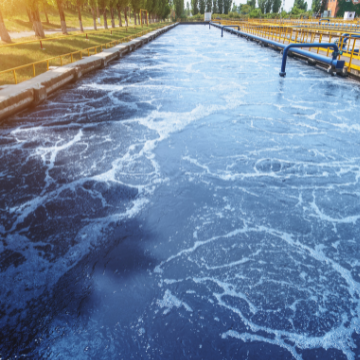Välj ditt land/din region:
Nuvarande region:
 Sweden (SV)
Sweden (SV)
- Branscher och tillämpningar
- Blåsare för avloppsvatten
- Aeration in Wastewater Treatment
Hur kan vi hjälpa dig?
Aeration is an integral part of any biological wastewater treatment process. The effectiveness of the process largely depends on how well designed the aeration system is.
Selecting the right technology may make all the difference for your wastewater treatment application.
Learn About the Robuschi Blower Portfolio for Aeration in Wastewater Treatment
Aeration is a technique supporting the biological processes that take place in the second stage of the wastewater treatment (WWT) process.
The pre-filtered wastewater that enters aeration tanks still contains ammonia and very small organic particles that could not be filtered out in the sedimentation tanks.Large amounts of compressed air are introduced into the process via a system of surface or submerged diffusers.
The aim is to feed the microorganisms present in the wastewater and thus effectively remove the waste and pollutants from it.The biological process is energy intensive, but it is a very efficient way of treating wastewater as it may take as little as 5-6 hours.
Aeration provides dissolved oxygen that microorganisms need to carry out biodegradation processes.
The bacteria contained in the wastewater help to treat and stabilize it by breaking down organic matter. Without a sufficient amount of oxygen, the biodegradation is slow and results in an incomplete conversion of the pollutants.When occurring under septic conditions, the process often sees hydrogen and sulfur form hydrogen sulfide.
Carbon is transformed into methane or converted into organic acids. This leads to the creation of low pH conditions in the basin, hampering the treatment process and accelerating the production of odor.

Aeration is a crucial step of the wastewater treatment process. It assists in removing undesired compounds from the water, preparing it for the next phase of treatment. Additionally, it is cost-effective and environmentally friendly. Most municipal and industrial water treatment plants use aeration as part of an overall process to purify water and remove its pollutants.
There are several types of aeration processes used in wastewater treatment, either for disposal or for reuse. Some of them are more common than others. It is important to take into consideration their pros and cons based on your individual needs and goals. The most popular methods of aeration are:
1. Activated sludge process (ASP) - air or oxygen is introduced into a mixture of primarily treated wastewater and microorganisms contained in an aeration tank. The microorganisms multiply and grow as they decompose organic matter, forming a sludge blanket. The mixture then enters a settling tank or a clarifier where the sludge settles. In this way, it becomes separated from the purified water.
2. A. Sequencing batch reactor (SBR) - this method is similar to the ASP method, except that a single tank is used throughout the process.B. Sequencing batch bioreactor (SBBR) - this method is similar to the SBR method. However, the biological process is here supported by additional media (a biofilm carrier), rather than by aeration alone. As a result, the hydraulic retention time (HRT) is reduced.
3. Membrane bioreactor (MBR) - this method combines a membrane process such as microfiltration with a biological treatment process such as the activated sludge process.
4. Moving bed biofilm reactor (MBBR) - in this method, plastic carriers with biofilm are used to decompose the organic substances in the wastewater.
Before selecting the aeration method for your wastewater treatment processes, you need to evaluate the advantages and disadvantages of each of the available options. You also have to consider the best blower solution for each of them.
Do you need help from our experts? Contact us
